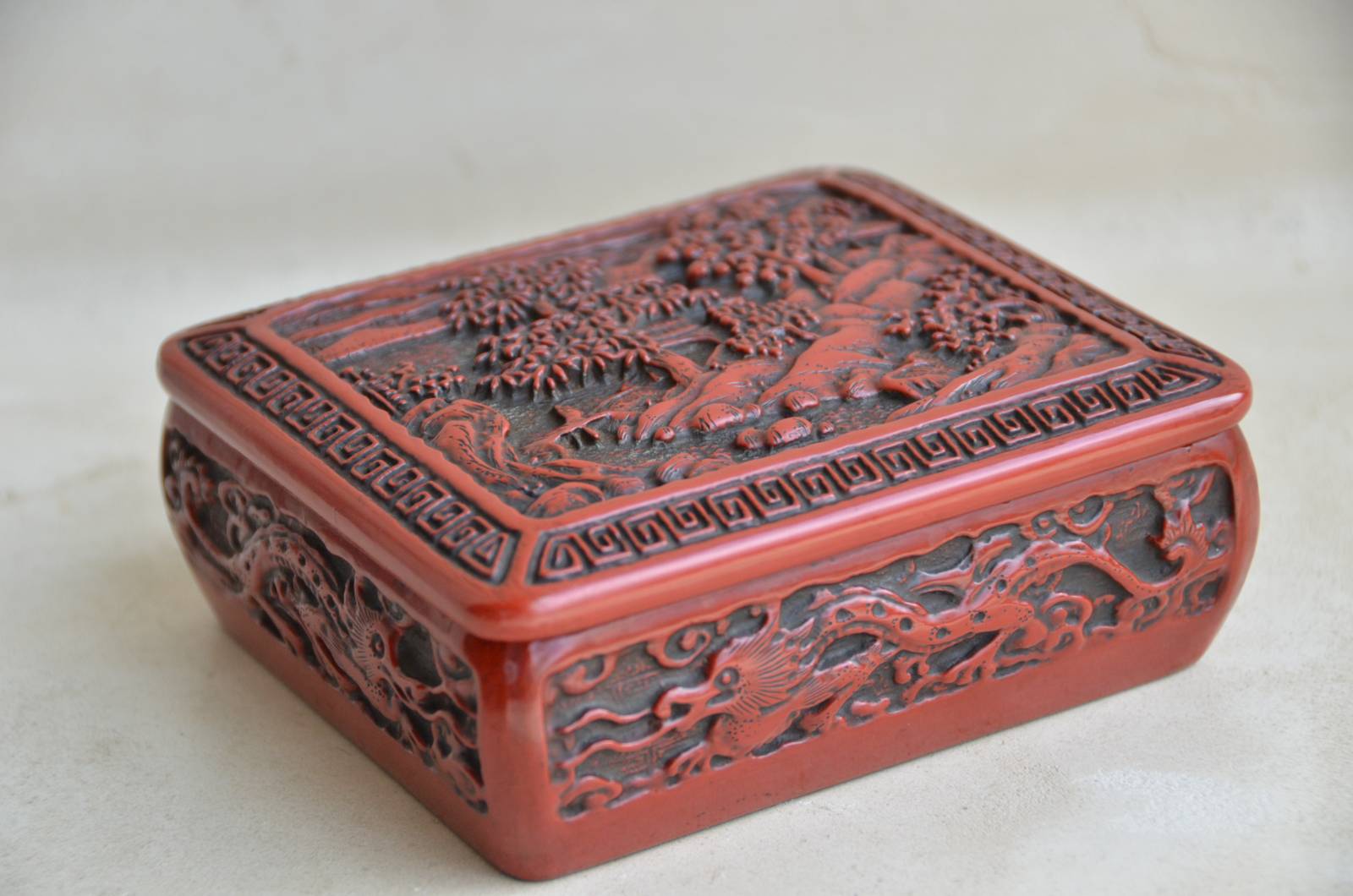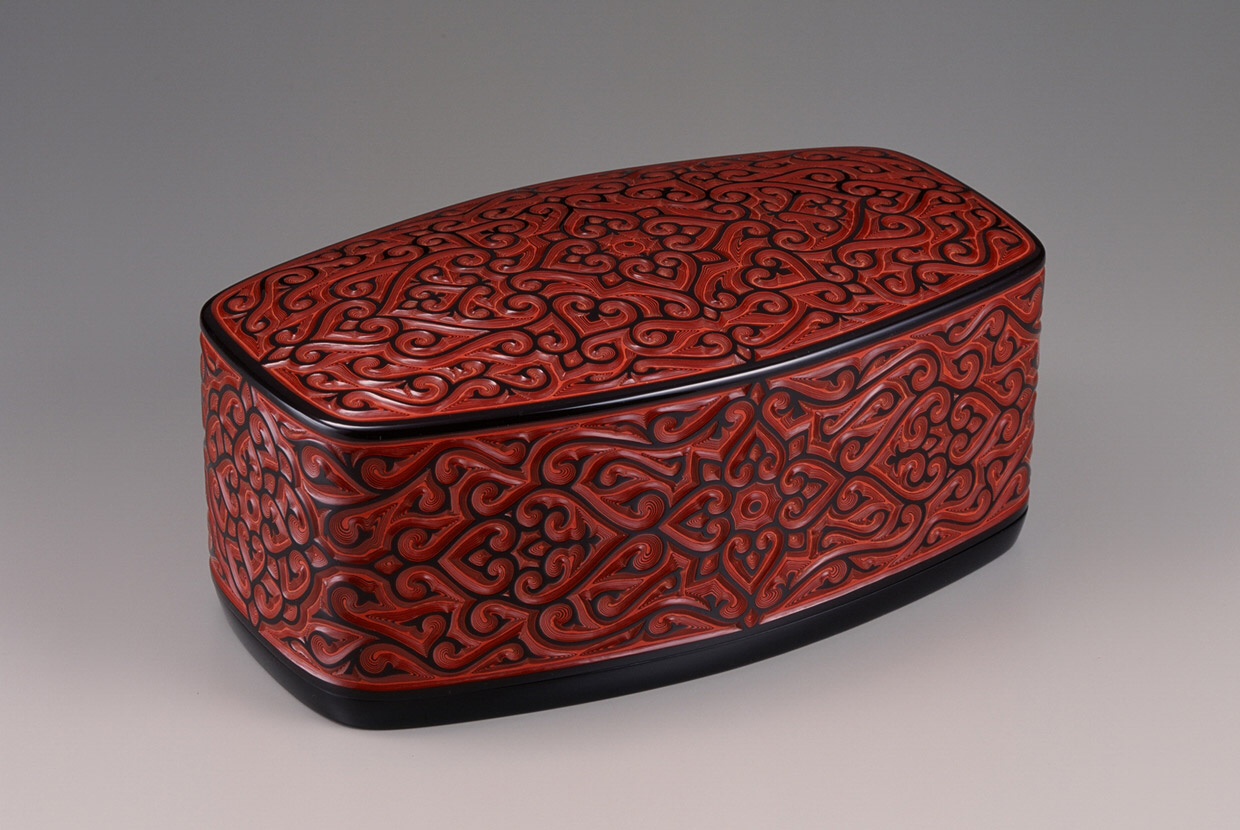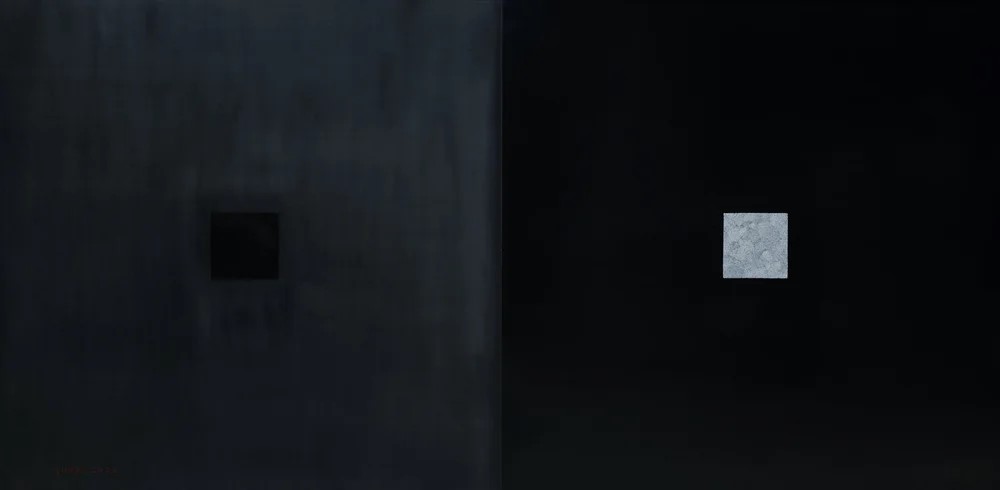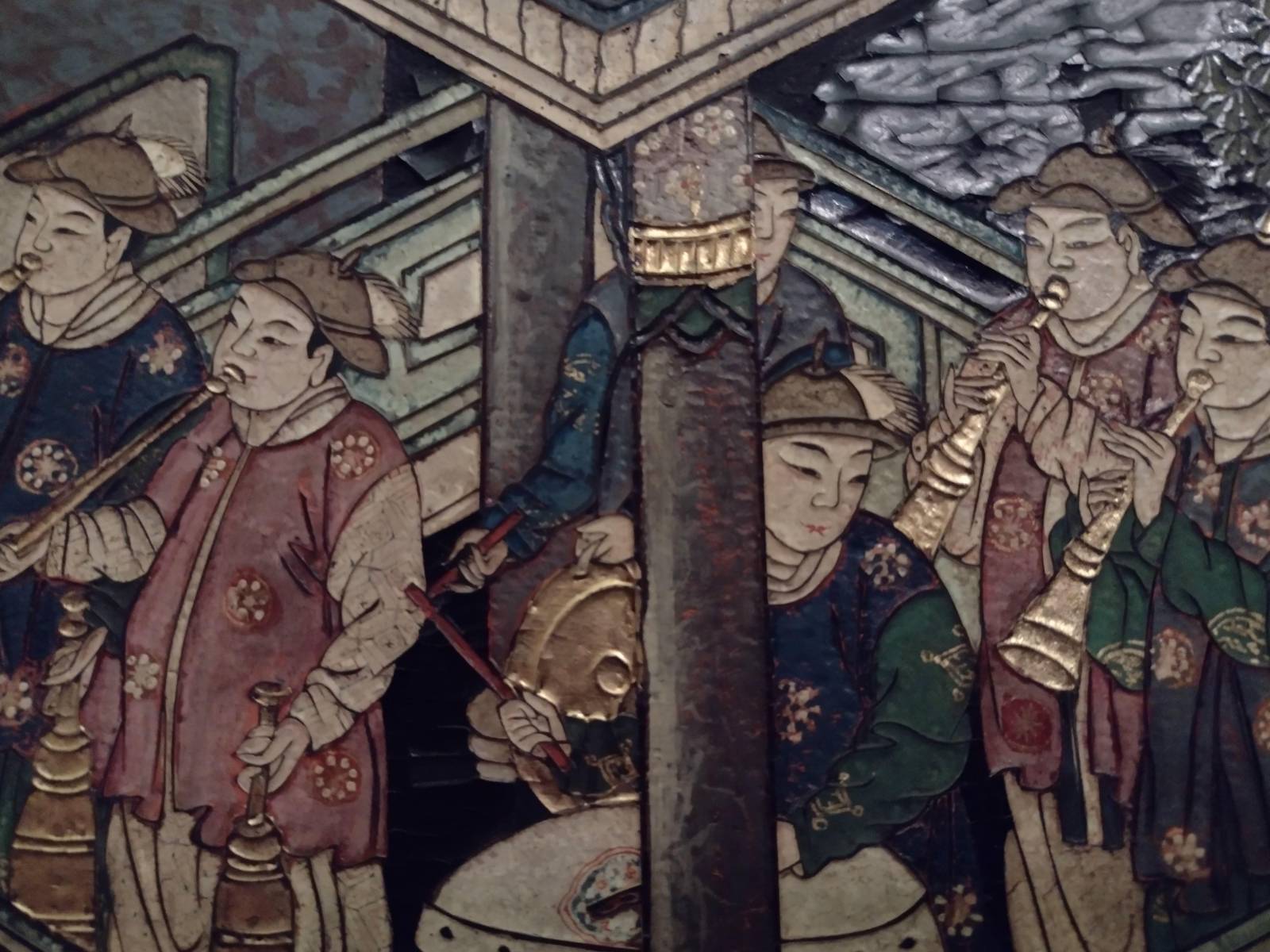China
by Kenta Takeshige
In China, lacquer is called Da Qi 大漆.
Up to now the oldest lacquerware discovered in China dates back to the Neolithic era. During the Warring States period, the production of lacquer had been greatly upscaled, and lacquerware with elaborate decoration appeared for the first time. In those early days, surface decorations were in the form of Lacquer Paintings "描漆" and inlays. Black lacquer was made by adding carbon to the refined sap, yellow by adding orpiment, and red by mixing in mercury sulfide (cinnabar). These were the colors used in ancient Chinese lacquer paintings; until recent years only a limited number of colors could be produced, because the original color of lacquer outweighs the colors of the pigments.
Chinese lacquer techniques
The origin of Mother-of-Pearl "螺鈿", a technique for inlay of shell pieces on lacquer, is not clear. Dry Lacquer "脱胎 or 夾紵" is a technique that uses a mold of wood, soil, or plaster. Onto this mold linen cloth was pasted with glue lacquer to make a foundation. This technique appeared in the Warring States period and led to massive production during the Han period. It made it possible to create complex shapes and was also used to create Buddhist statues. The Buddhist statue at Luoyang White Horse Temple, which is considered to be the oldest Buddhist temple in China, was made using this technique. A technique of carving patterns on a lacquered surface with a blade, using lacquer as an adhesive, and dropping gold leaf or gold powder into carved lines, called Gold Inlay "鎗金", was developed in the Song dynasty. Many other lacquer techniques also originated in China and spread throughout Asia. All Asian lacquer crafts are based on the lacquer art developed in China.
Carved Lacquer

Carved Lacquer "剔漆" or "彫漆" is a lacquer technique outstanding developed in China. In the Han dynasty, Piled Lacquer "堆漆" was conceived to form reliefs by repeatedly applying lacquer. This technique continued to develop during the Tang and Song dynasties, adding carving: lacquer was repeatedly covered in multiple layers until it was thick enough to be sculpted and carved. Using red lacquer it is called "剔紅", with black lacquer it is called "剔黒". If different colors of lacquer are applied in different layers, then cutting through them would reveal the contrast in color. This technique is called "剔彩".
The technique Guri "剔犀" or "犀皮彫" was named after the rhinoceros horn. It was called as such because the cross section has a texture effect that is very similar to that of a rhinoceros horn. It depicts bracken-shaped curved patterns.


Carved lacquer was most thriving in the 13th and 15th centuries. Recently, there have been many attempts to practice traditional lacquer art as a contemporary artistic expression.

~Other Chinese lacquer techniques~
※ Names in ( ) are the same or similar techniques in Japan. English translation of these technique names by Takeshige Kenta
-
Mono-colored Lacquerware "一色漆器": solid, single-color lacquering without decoration. (Kuro-nuri), (Shu-nuri)
-
Lacquering "罩漆": a technique of finishing with transparent lacquer. (Tame-nuri)
-
Gold Dust Lacquer "洒金/砂金漆": a technique of pasting thin pieces of gold on the lacquer surface or sprinkling coarse gold powder, and finishing with transparent lacquer. (Nashiji)
-
Gold Drawing "描金/泥金画漆": a technique of drawing patterns on the lacquer surface, and using silk wool as tampon to fix the metal powder on the patterns. (Keshi Maki-e)
※ Lacquer crafts of Gold Drawing are among the artifacts recovered from the Warring States period in China. These finds counter the assumption this technique originated in Japan.

-
Filled Lacquer "填漆": a technique of engraving patterns on the lacquer surface, and filling the patterns with lacquer of different colors. (Kinma)
-
Carved and Filled Lacquer "雕填/填漆戧金": patterns are carved on the lacquer surface, and the outlines of the patterns are emphasized with gold. The inside of the patterns are filled with colored lacquer. A technique that combines Filled Lacquer and Gold Inlay.

-
Rhinoceros Skin "犀皮漆": first, egg white is added to make a thick and uneven lacquer layer on the surface. Then, various colored lacquer layers are applied on top of this. Finally, by abrading it until even and smooth the covered design reappears. (Kawari-nuri), (Tsugaru Kara-nuri), (Kiso Tsuishu-nuri)
-
Carved Chalk or Coromandel Lacquer or Bantam Work "款彩/大雕填/刻灰": a technique for large furniture and folding screens. Firstly, applying chalk to the base material as a foundation. Next, lacquer is applied over it. In the end, patterns are drawn on the lacquer surface and the outline of the patterns are carved into the underlying chalk layer. Therefore it is called Carved Chalk. The carved patterns are filled with various colored lacquer and metal powder. The white foundation of the chalk brightens the color of the applied lacquer.

- Gold Powder Lacquer/Gilding "渾金漆/貼金箔": is created by first covering the entire lacquer surface with gold leaf or powder, forming a gold background. Then gold patterns are drawn on top of this gold, also in gold. The outline of the patterns are highlighted with black lacquer. In other words, a base of one color of gold lacquer is used, and a pattern is decorated with a different color of gold lacquer, and the gold pattern is then outlined with black lacquer.

-
Hundred Treasures Inlay "百宝嵌": inlay technique with gems, ivory, coral and jade on lacquer.
-
Flattened Metal "平脱": inlay technique using patterns cut out of gold, silver, or other sheet metal on lacquer. (Hyomon)
